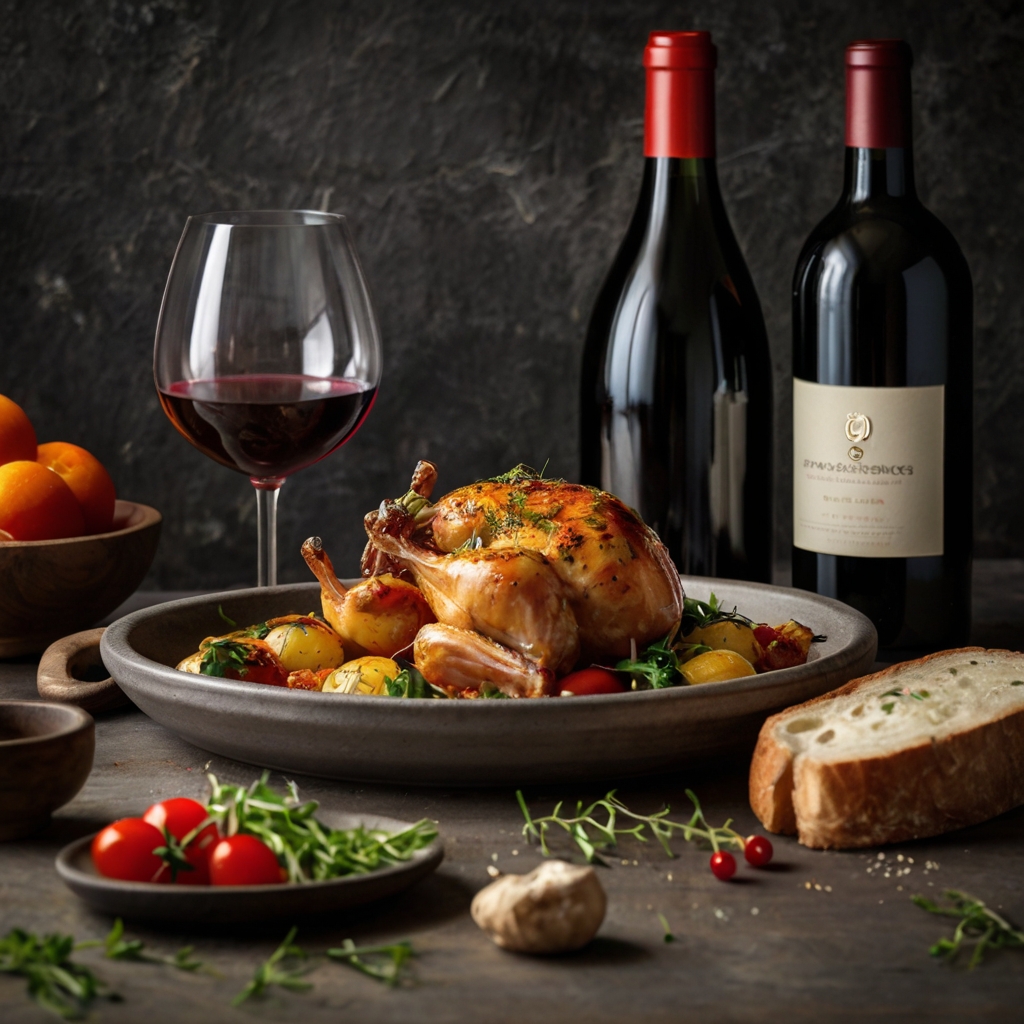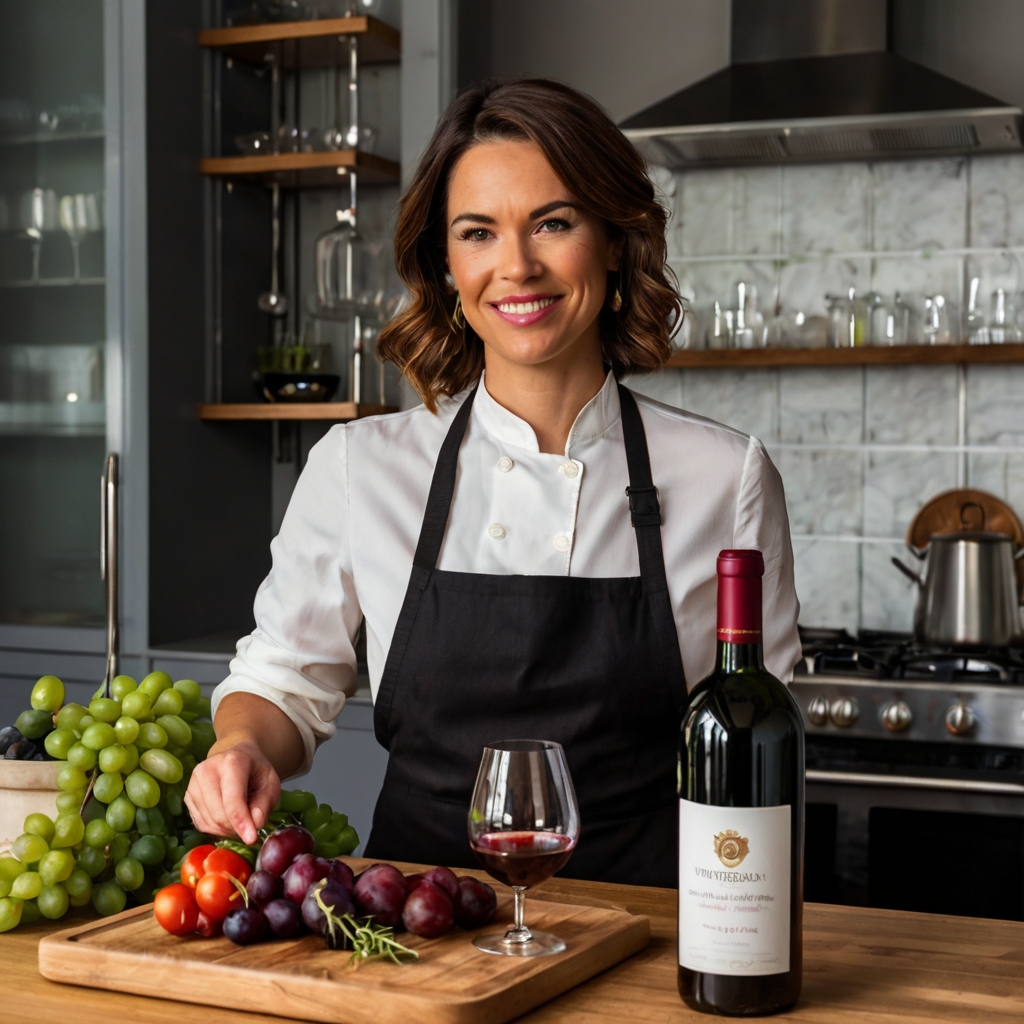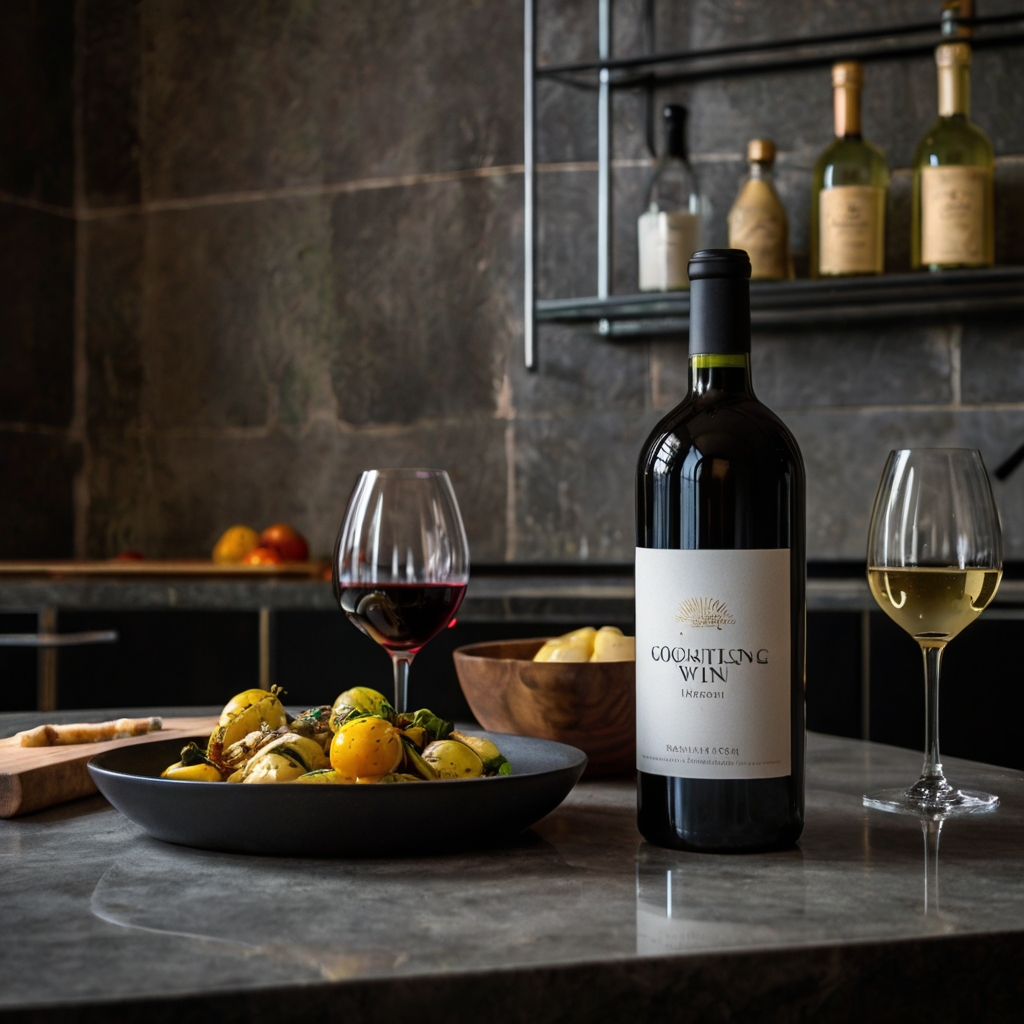Cooking With Wine: A Chef’s Guide to Transformative Flavors

Hi, my name is Chef Marcus. Let me tell you about the time I nearly got fired from my first sous chef position. The executive chef caught me using “cooking wine” from the discount store in our signature coq au vin. The look on his face – pure horror. He marched me to the wine cellar, shoved a glass of Burgundy in my hand, and said: “Taste that. Now imagine reducing it for two hours. That’s what your food should taste like.”
That lesson changed my career. Today, I want to share why wine isn’t just another ingredient – it’s your secret weapon for restaurant-quality dishes at home.
Why Cook With Wine?
How Wine Enhances Flavor

Last Thanksgiving, my niece asked why her mashed potatoes never taste like mine. Know what the difference was? A splash of reduced white wine in the cream. Here’s what makes wine so special:
Essential Rules for Cooking With Wine
- Acidity – That bright pop in your cream sauce? It’s the malic acid in wine cutting through fat. Try this: Next time you make alfredo, deglaze the pan with Sauvignon Blanc before adding cream. Taste the difference?
- Sweetness – When I worked in Bordeaux, we reduced cheap Merlot with honey to glaze duck. The sugars caramelize into something magical.
- Umami – Ever wonder why restaurant risotto tastes deeper? It’s the glutamates from fermented wine. My trick: Add wine in two stages – early for depth, late for brightness.
Wine vs. vinegar: When to use which
I keep both on my station, but here’s how I choose:
| Situation | Why Wine Wins | When Vinegar’s Better |
| Pan sauces | Complex flavor development | Too sharp for delicate reductions |
| Braises | Alcohol helps tenderize | Can make meat tough over long cooks |
| Quick pickles | – | Faster acid penetration |
Pro Tip: When my béarnaise breaks (it happens to everyone), I fix it with 1 tsp reduced white wine instead of vinegar – smoother finish, no harsh bite.
Essential Rules for Cooking With Wine
- “Never cook with wine you wouldn’t drink”
Early in my career, I thought “cooking wine” was a thing. Then I tasted a sauce made with proper Chardonnay. Game over. Here’s why:- Cheap wines often contain additives that turn bitter when reduced
- Cooked flavors concentrate – flaws become obvious
- Exception: Slightly corked wine works in long braises where flavors meld
- The Golden Ratio
After ruining countless dishes, I developed these foolproof measures:- Sauces: 1/4 cup wine per 1 cup liquid (more and it overpowers)
- Marinades: Equal parts wine and oil (less and meat dries out)
- My secret: For stews, add wine in two stages – half at the start for depth, half at the end for brightness
- Temperature Matters
Here’s where most home cooks go wrong:- Adding cold wine to a screaming hot pan causes proteins to seize
- Solution: Remove pan from heat, let cool 30 seconds, then add wine slowly
Choosing the Right Wine for Cooking
Dry vs. Sweet Wines
During my stage at Le Bernardin, I watched a chef ruin $200 worth of scallops with sweet Riesling. The sugar caramelized too fast, turning the sauce to glue. Here’s how I choose now:
Best Dry Wines for Savory Dishes:
- White: Unoaked Chardonnay (my workhorse since culinary school)
- Red: Cabernet Franc (softer tannins than Cab Sauvignon)
When to Use Sweet Wines in Cooking:
- Desserts: Muscat for poached pears (adds floral notes)
- Glazes: Madeira for duck breast (brush on last 5 minutes)
Story Time: I once used expensive Sauternes in a sauce – total waste. The sugar overpowered everything. Now I keep $8 Riesling for cooking.
Red, White, or Fortified Wines?
Red Wine: Ideal for Hearty Meats and Braises:
In my bistro days, we’d use the dregs from bottles to make what we called “chef’s ketchup” – reduced red wine with shallots and thyme. Magic on everything.
White Wine: Perfect for Seafood and Cream Sauces:
The secret to my famous lobster bisque? Simmer the shells in reduced Sauvignon Blanc first. The wine extracts flavors water can’t.
Fortified Wines (Sherry, Marsala): Versatile Pantry Staples:
- Sherry: 1 tbsp in gravy = instant depth
- Marsala: My 15-minute chicken piccata shortcut
Budget-Friendly Wine Choices
Best Affordable Wines for Cooking:
| Type | Brand | Why I Love It |
| Dry White | La Vieille Ferme | Consistent acidity |
| Red | Bogle Petit Sirah | Bold but not tannic |
| Sherry | Trader Joe’s Fino | Clean, nutty finish |
When It’s Worth Splurging on Higher-End Bottles:
- Finishing touches (last swirl in risotto)
- Dishes where wine is the star (like coq au vin)
Mastering Wine Cooking Techniques
How to Deglaze a Pan Like a Chef

I’ll never forget the first time I properly deglazed a pan. The way those browned bits dissolved into the wine, creating this glossy, aromatic sauce – it was like culinary alchemy. Here’s how to do it right:
- After searing meat, pour off excess fat but leave the fond (those browned bits)
- Remove pan from heat – this is crucial!
- Add wine slowly while pan is still hot but not scorching
- Use a wooden spoon to scrape – metal can damage pans
- Reduce by half before adding stock
Common mistakes:
- Adding wine to dry pan (creates harsh flavors)
- Solution: Always have some fat in the pan
Reducing Wine for Richer Flavor
At Per Se, we’d reduce cases of wine down to syrups. Here’s what I learned:
For quick sauces:
- Boil rapidly 5-7 minutes
- Stop when it coats the back of a spoon
For demiglace:
- Simmer 45+ minutes
- Add aromatics early, strain at the end
My Restaurant Trick: Freeze reduced wine in ice cube trays. One cube = instant sauce starter.
Marinating with Wine
The best marinade I ever made was for a TV competition – red wine, coffee, and orange zest. The judges licked their plates. Here’s my science:
Why it works:
- Alcohol penetrates meat faster than water
- Acid helps tenderize
- Flavor compounds bind to proteins
My 24-hour marinade recipe:
- 1 cup red wine
- 1/4 cup olive oil
- 2 smashed garlic cloves
- 1 tbsp juniper berries
Warning: Never reuse marinade – boil it first if needed.
Signature Wine-Infused Recipes
Coq au Vin (My Simplified Version)
I’ll never forget the first time I made traditional coq au vin as an apprentice in Lyon. The old chef made me tend to it for eight hours—turning the rooster pieces, skimming fat, adjusting the flame. These days? I’ve streamlined it for home cooks without sacrificing depth. Here’s how:
Why Chicken Thighs Work Better Than Whole Birds
Bone-in, skin-on thighs are my gold standard because:
- Collagen-rich: Breasts dry out; thighs stay juicy through long braising
- Forgiving: Hard to overcook (unlike delicate breasts)
- Budget-friendly: 1/3 the price of whole birds at my butcher
Pro Tip: Sear thighs skin-side down first in a cold pan—renders fat slowly for crispier skin.
The 1 Bottle I Always Use
After testing 27 varieties, my winner is Louis Jadot Bourgogne Pinot Noir ($20). Why?
- Medium-bodied: Doesn’t overpower the chicken
- Low tannins: Won’t turn bitter when reduced
- Consistent year-round (critical for recipe testing)
Chef’s Secret: Use half the wine for braising, reserve the rest to splash in before serving. Brightens the whole dish.
White Wine Garlic Butter Mussels
This dish saved me during my first solo dinner service when 12 orders hit the board at once. It’s that fast.
How to Pick the Freshest Mussels
At the market, I teach my cooks the “3 S’s” test:
- Smell: Should be briny like the ocean (not fishy)
- Shells: Intact, no cracks (tap them—they should sound solid)
- Siphon: If slightly open, should close when tapped
Storage Trick: Keep in a bowl covered with a damp cloth (not water—they’ll suffocate).
Why Sauvignon Blanc Is Non-Negotiable
I learned this the hard way when a substitute cook used Chardonnay—the mussels tasted cloying. Sauvignon Blanc works because:
- High acidity cuts through the butter
- Herbal notes (gooseberry, grass) complement the seafood
- Lower alcohol (12-13%) won’t overpower
My Hack: Add a handful of seaweed to the broth for an extra umami kick (strain before serving).
Red Wine Chocolate Truffles
My pastry chef girlfriend mocked these… until she tried one. Now they’re our best-selling dessert.
Reducing Wine for Dessert: My 2:1 Ratio
For 24 truffles:
- Simmer 1 cup Cabernet Sauvignon with 2 tbsp sugar until reduced to ½ cup
- Cool completely before mixing into:
- 8 oz dark chocolate (70%)
- ½ cup heavy cream
Science Bit: The reduction concentrates fruity notes (blackberry, plum) while evaporating harsh alcohol.
Garnishing With Flaky Salt (Trust Me)
A pinch of Maldon salt on each truffle:
- Balances sweetness
- Enhances cocoa flavor
- Adds textural contrast
Controversial Take: I sometimes add a drop of balsamic vinegar to the reduction—boosts acidity like a good espresso does in chocolate.
Avoiding Common Wine Cooking Mistakes
“Why Does My Dish Taste Bitter?”
A diner once sent back my osso buco for being “like aspirin.” Turned out I’d over-reduced the Barolo. Here’s how to avoid this:
Over-Reducing Wine: How to Spot It
- Visual: Syrup coats spoon too thickly (should be like warm honey)
- Aroma: Smells burnt rather than fruity
- Taste: Lingering harshness (not pleasant dryness)
Fixing Harsh Flavors (A Chef’s Quick Fixes)
- For sauces: Whisk in 1 tsp cold butter (fat coats bitter compounds)
- For braises: Add a peeled potato (absorbs bitterness in 20 mins—discard after)
- Nuclear option: Balance with 1 tsp honey + splash of stock
Alcohol Content: Myths and Facts
Does the Alcohol Really Cook Off?
Lab tests show:
| Cooking Method | % Alcohol Remaining |
| Flambé | 25% |
| Simmered 15 mins | 40% |
| Braised 2+ hours | 5-10% |
My Experience: Even after hours, trace amounts remain. Which matters for…
Serving Dishes to Kids/Pregnant Guests
Safer Alternatives:
- For deglazing: Apple cider + lemon juice
- In desserts: Grape or pomegranate juice reductions
- In risottos: Mushroom broth + splash of vinegar
Wine Pairings With Cooked Dishes
Matching Wine Cooked IN Food vs. Served WITH It
A sommelier once schooled me: “The wine in the dish should hint at what’s in the glass.”

Example: My creamy Chardonnay sauce → Paired with Chablis (not oaky Chardonnay) because:
- Sauce is rich → Glass wine should be lean
- Cooked wine’s flavors meld → Served wine needs brighter acidity
My Foolproof Pairing Chart
| Dish | Wine in Cooking | Wine to Serve | Why |
| Beef Bourguignon | Pinot Noir | Aged Bordeaux | Cooked wine softens; glass wine needs tannins for fat |
| Lemon Butter Scallops | Sauvignon Blanc | Champagne | Sauce is rich; bubbles cleanse palate |
Pro Move: Taste the reduction before choosing the pairing wine.
FAQs: Your Questions, My Answers
1. Can I use boxed wine for cooking?
Better than “cooking wine,” but avoid long reductions. The preservatives can turn bitter. My exception: Black Box Cabernet for quick pan sauces.
2. Why does my wine sauce separate?
You’re adding cold wine to hot fat too fast. Take the pan off heat, let it cool 15 seconds, then add wine gradually while whisking.
3. How do I fix a too-sweet wine reduction?
Counterbalance with 1 tsp Dijon mustard or dash of vinegar. For desserts, add pinch of espresso powder.
4. Can I freeze leftover wine for cooking?
Absolutely! Freeze in ice cube trays (1 cube = 2 tbsp). Pro tip: Freeze reduced wine for instant flavor bombs.
5. Why do chefs flambé with wine?
It’s not just for show! Burning off alcohol leaves concentrated flavors. Use high-proof wines like Madeira or Sherry for best results.
6. What’s the biggest mistake with wine marinades?
Marinating too long. Acid breaks down proteins – 24 hours max for beef, just 30 minutes for seafood.
7. Does cooking wine kill allergens?
No! Sulfites remain. For allergic guests, use verjus (unripe grape juice) instead.
8. Why add wine at different stages?
Early = deep flavor integration. Late = bright acidity. Try adding half at start, half last 10 minutes.
9. Best wine for deglazing stainless steel pans?
Dry white wines like Pinot Grigio. Their acidity helps lift fond without reacting with metal.
10. Can I use wine corks in cooking?
Surprisingly, yes! Toast clean corks, add to braises. Imparts subtle oak flavor like barrel-aged wines.
11. Why does my risotto turn purple with red wine?
Anthocyanins! For white risotto, use white wine or add red wine after toasting rice.
12. How to store open cooking wine?
Transfer to small bottle, fill to top to limit oxygen. Add 1 tsp olive oil to create protective layer.
13. Why do my wine sauces taste flat?
You’re missing acid. Finish with lemon juice or vinegar – about 1/4 tsp per cup of sauce.
14. Can I cook with sparkling wine?
Fantastic for light sauces! Reduce by half first. My secret for seafood pasta.
15. What’s your weirdest wine cooking hack?
Adding 1 tsp wine to scrambled eggs – the alcohol prevents proteins from getting rubbery.